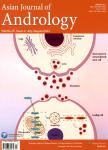Are sperm capacitation and apoptosis the opposite ends of a continuum driven by oxidative stress?
Are sperm capacitation and apoptosis the opposite ends of a continuum driven by oxidative stress?作者机构:Priority Research Centre in Reproductive Science Discipline of Biological Sciences and Hunter Medical Research Institute University of Newcastle NSW 2308 Australia.
出 版 物:《Asian Journal of Andrology》 (亚洲男性学杂志(英文版))
年 卷 期:2015年第17卷第4期
页 面:633-639页
核心收录:
学科分类:0710[理学-生物学] 07[理学] 0905[农学-畜牧学] 071009[理学-细胞生物学] 09[农学] 0901[农学-作物学] 090501[农学-动物遗传育种与繁殖] 090102[农学-作物遗传育种]
主 题:apoptosis reactive oxygen species sperm capacitation
摘 要:This chapter explores the possibility that capacitation and apoptosis are linked processes joined by their common dependence on the continued generation of reactive oxygen species (ROS). According to this model capacitation is initiated in spematozoa following their release into the female reproductive tract as a consequence of intracellular ROS generation, which stimulates intracellular cAMP generation, inhibits tyrosine phosphatase activity and enhances the formation of oxysterols prior to their removal from the sperm surface by albumin. The continued generation of ROS by capacitating populations of spermatozoa eventually overwhelms the limited capacity of these cells to protect themselves from oxidative stress. As a result the over-capacitation of spermatozoa leads to a state of senescence and the activation of a truncated intrinsic apoptotic cascade characterized by enhanced mitochondrial RO$ generation, lipid peroxidation, motility loss, caspase activation and phosphatidylserine externalization. The latter may be particularly important in instructing phagocytic leukocytes that the removal of senescent, moribund spermatozoa should be a silent process unaccompanied by the generation of proinflammatory cytokines. These observations reveal the central role played by redox chemistry in defining the life and death of spermatozoa. A knowledge of these mechanisms may help us to engineer novel solutions to both support and preserve the functionality of these highly specialized cells.



